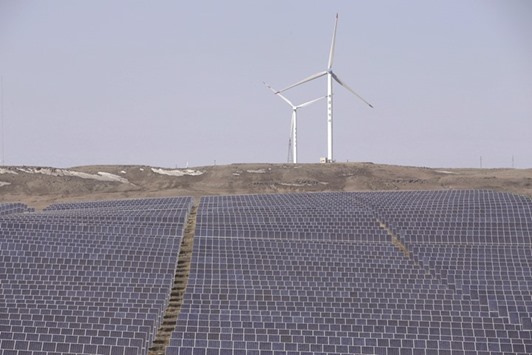China is lagging far behind its target to boost the country’s offshore wind power capacity due to technical problems and high costs, which in the absence of more state subsidies could dent its plans to install 10 gigawatts (GW) by 2020, developers said.
China is the world’s top generator of electricity from wind turbines, with 145 GW of installed capacity, but most of this is onshore.
The push to expand offshore has been driven by the fact that many of its major economic hubs are near the coast.
The country’s first offshore project, the 102-megawatts (MW) Donghai Bridge Wind farm, was built eight years ago in Shanghai.
Development has, however, slowed since then with a total capacity of only 1 GW being installed by 2015, versus a target of 5 GW, according to the Global Wind Energy Council.
“We hold a conservative view on the 2020 target,” given losses from the target miss, but are positive that China will step up investment, said Wang Wen, spokeswoman of China’s second largest offshore wind turbine producer, Sinovel.
“It is a global trend to go offshore, but it needs financial support to tackle technical hurdles,” she added.”The cost to build an offshore project is twice that of the onshore plant.”
Installing large turbines offshore is challenging, with most countries struggling in initial phases. However, nations like Denmark, Britain or Germany already have much more installed. Chinese officials agree that costs have been a major deterrent, but believe the country needs to master the technology first instead of rushing to expand.
“We don’t need a massive expansion, given the high risk level and time we need to gain experience and improve the technology,” Shi Lisha, deputy director of the renewable energy division under the National Environment Administration, said this week.
Also, the 2020 target is not mandatory, he added.
To make investment into offshore wind more attractive, developers have called for higher subsidies, or so-called feed-in tariffs, but Shi poured cold water over such hopes, saying the current tariff of 0.85 yuan ($0.1287) per kilowatt-hour would likely remain for the next five years.
Given the difficulties, it is unclear how much offshore capacity will be installed.

Wind turbines and solar panels are seen at an energy storage and transmission power station from State Grid Corporation of China in Zhangjiakou of Hebei province. China is the world’s top generator of electricity from wind turbines, with 145 GW of installed capacity, but most of this is onshore.
